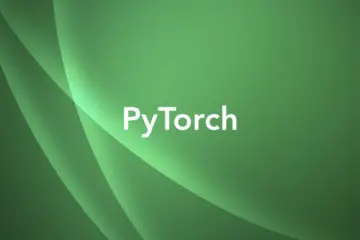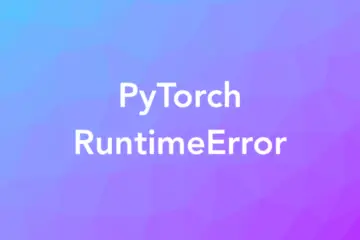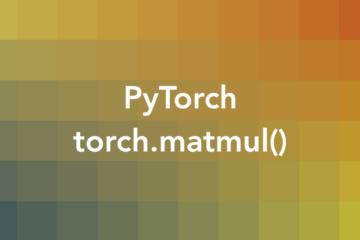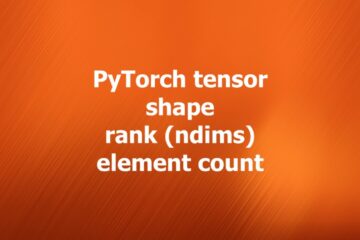PyTorch: How to Find the Min and Max in a Tensor
torch.min() and torch.max() In PyTorch, you can make use of the built-in functions torch.min() and torch.max() to find the minimum and maximum values of the whole tensor or…
PyTorch Error: mat1 and mat2 shapes cannot be multiplied
Overview When working with PyTorch, you might encounter the following error: This error occurs when you try to perform a matrix multiplication using torch.matmul() or torch.mm() with two…
Working with the torch.matmul() function in PyTorch
Overview The behavior of the torch.matmul() function The torch.matmul() function performs a matrix product of two tensors. The behavior depends on the dimensionality of the tensors as follows:…
How to Transpose a Tensor in PyTorch
In the world of PyTorch and deep learning, transposing a tensor means rearranging its dimensions. For example, a tensor with a shape (3, 4) becomes (4, 3) after…
PyTorch tensor shape, rank, and element count
The shape of a PyTorch tensor The shape of a PyTorch tensor is the number of elements in each dimension. You can use the shape attribute or the…
PyTorch: Determine the memory usage of a tensor (in bytes)
In order to calculate the memory used by a PyTorch tensor in bytes, you can use the following formula: his will give you the size of the tensor…
PyTorch: How to change the data type of a tensor
When working with PyTorch, there might be cases where you need to change the data type of a tensor for some reason, such as to match the data…
How to Create a Tensor Range in PyTorch
A tensor range in PyTorch is a sequence of numbers that are stored in a one-dimensional tensor. In order to create a tensor range, you can use the…
Ways to Create Random Tensors in PyTorch
When developing neural networks with PyTorch, there might be cases where you find random tensors are useful, such as when you need synthetic data for testing or experimentation…
PyTorch: How to create tensors with zeros and ones
PyTorch is a popular framework for creating and manipulating tensors for deep learning and other applications. Tensors are multidimensional arrays that can store numerical data and perform various…
« Previous 1 2 3 Next »




